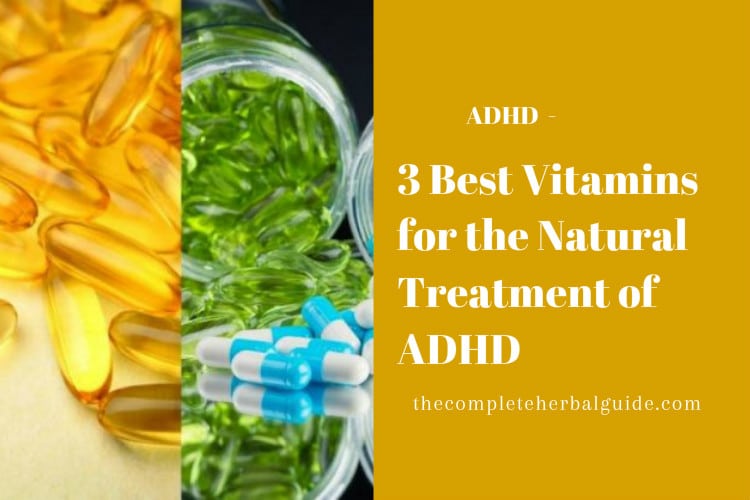
Best Foods and Herbs for ADHD
Table of Contents
What to Include and Avoid in an ADHD
Among foods that have been connected to worsening symptoms of adult ADHD are:
Sugar: “We consume over one hundred and fifty pounds of white sugar a year,” says Strickland, pointing out that a 32-ounce cola has 32 teaspoons. “The blood sugar level rises quickly in our bloodstream and dumps insulin into the body. The body dumps adrenaline in response, and the blood sugar levels go up and down. This aggravates aggression and makes you crave more sugar.” While high-fructose corn syrup is a major culprit, honey and raw sugar can also contribute to this blood sugar spike.
Food additives: Manmade artificial chemicals such as food coloring, flavors, and preservatives are toxins that your body has to remove,” says Strickland. “If your body isn’t able to remove them efficiently, it can lead to problems such as headaches, asthma, and aggression.”
These foods may aid brain function and help reduce the symptoms of adult ADHD:
Omega-3 fatty acids: Research has shown that a deficiency of omega-3 fatty acids may be linked to an increased risk of ADHD. “It likely has to do with myelin sheaths [the protective membrane surrounding the nerves of the brain and spinal cord] being made up almost entirely of fatty acids,” says Hara. “Supplements can be helpful for a lot of people. I recommend 3,000 milligrams a day.”
Caffeine: “Studies have shown a small amount of caffeine can improve concentration and attention,” says Strickland. “Try having one cup of coffee in the morning and a cup of green tea in the afternoon.”
Protein: Protein is extremely critical,” says Strickland. “Protein provides amino acids to make neurotransmitters in the brain, such as dopamine and serotonin. These chemical messengers control mood and concentration.”
Complex carbohydrates: “ “Our primary fuel source is carbs,” says Hara. “We have very low glycogen stores — that’s what we use for fuel after our bodies have broken down carbs. If you don’t have enough glycogen stores, you’re setting yourself up for low blood sugar, which is counter-productive to concentrating.” Getting the right carbs is a must. “Most individuals are consuming too much soda, sugar, and white grains,” says Strickland. “We need to transition to whole grains.”
Herbs: “Research shows that Ginkgo Biloba and ginseng may improve brain function and attention and prevent dementia,” says Strickland. “Try it for one month. Do you respond? If so, continue. If not, don’t.” Some people see benefits from herbs while others do not, she explains.
Avoid Certain Foods
Recent research has shown that diet contributes to ADHD, says Strickland. Elimination diets, such as the Feingold Diet, can help parents pinpoint foods that may be contributing to a child’s ADHD symptoms. “Certain foods can cause headaches, GI [gastrointestinal] tract problems, and itchy skin,” says Strickland. These symptoms can then become a part of everyday life.
Eliminating foods with artificial colors, flavors, and preservatives from a diet and then gradually adding foods back one at a time can help parents identify those causing problems, says Strickland. She says gluten- and casein-free diet can be helpful for a child with gastrointestinal problems and headaches. Casein is a protein found in dairy foods.
Many kids on such a diet find that they have improved gastrointestinal function, better sleep (since tummy troubles can cause kids to wake up throughout the night), and improved behavior and concentration. Today, making substitutions for gluten in a child’s diet is easier than it used to be. “Start introducing new foods such as gluten-free pasta, rice flour, and corn tortillas,” says Hara.
Another tip to remember is that a prolonged drastic elimination diet may not be necessary. “The Feingold Diet removes every possible trigger,” says Hara. “But why eliminate things that may not be a problem? Gradually, over time, you can add things back slowly.”
Hara cites her own son, 12, who was diagnosed at age 5 with ADHD. “He can tolerate milk once a week, but not more than that,” says Hara. “Kids can eat up to their tolerance level.”
Another way parents can help identify trigger foods is by carefully observing their children. “When my son was little, he would say ‘my head hurts’ after five minutes of reading,” says Hara. “But when we took the offending foods out, we realized his tummy hurt. For kids, we may think it’s picky eating when it’s really careful eating. Their mouth may itch, or their tummy may feel upset.”






